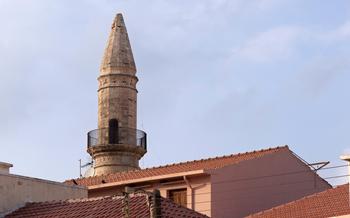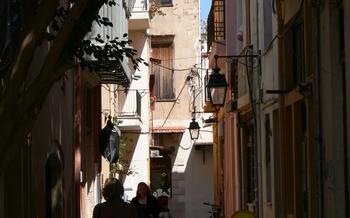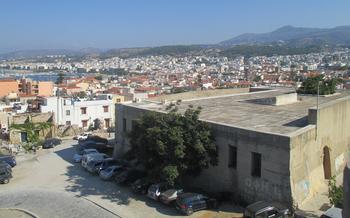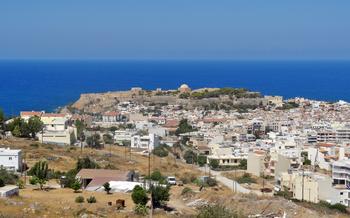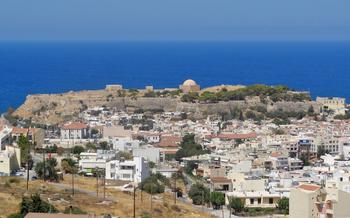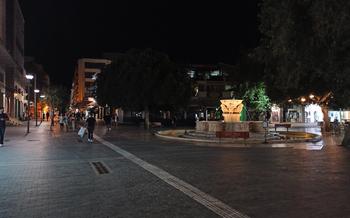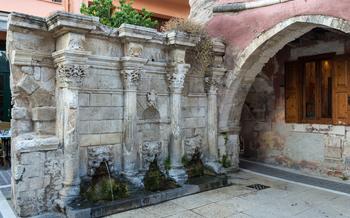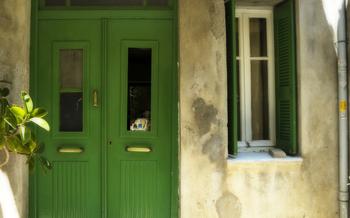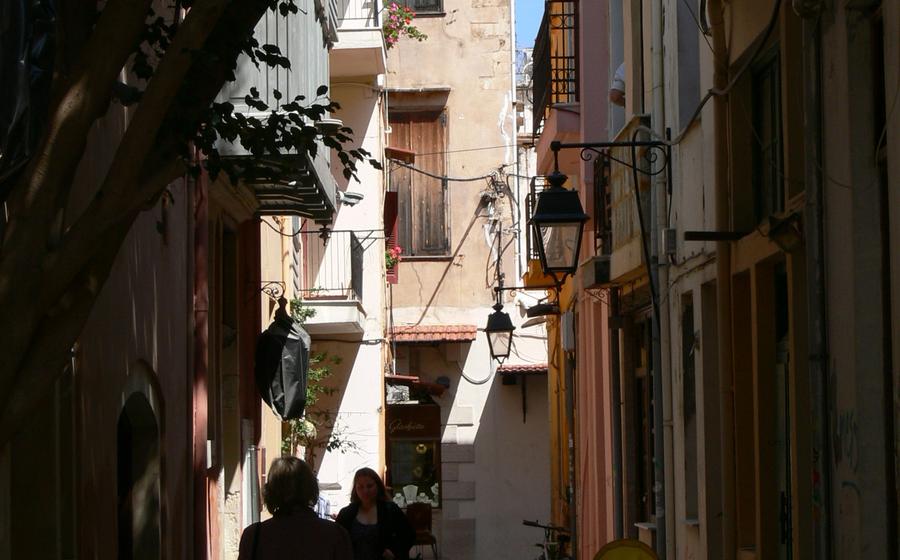
The House of Erofili
- The House of Erofili: A Hidden Gem in Rethymno
- Location and Accessibility
- Hours of Operation and Admission Fees
- Historical Context
- Architectural Features of the House
- Local Recommendations
- Historical Significance of Erofili's Story
- Cultural Importance of the House
- Practical Tips for Visitors
- Educational Programs and Workshops
The House of Erofili: A Hidden Gem in Rethymno
Nestled amidst the charming cobblestone streets of Rethymno's Old Town, the House of Erofili stands as a testament to a poignant love story that has captivated hearts for centuries. Erected during the Venetian era in the 17th century, this unassuming abode played a pivotal role in the unfolding tragedy of Erofili, a young woman whose ill-fated romance immortalized her name in Greek folklore.
Beyond its historical significance, the house possesses architectural elements that reflect the Venetian influence that shaped Rethymno's urban landscape. Venetian-style arches, ornate doorways, and intricate stone carvings adorn the exterior, while the interior reveals a harmonious blend of traditional Cretan and Venetian architectural motifs. Today, the house serves as a museum, offering visitors a glimpse into the world of Erofili, her tragic love affair, and the historical context that shaped their story.
Location and Accessibility
The House of Erofili is strategically positioned in the heart of Rethymno's Old Town, at 54 Arkadiou Street. This ideal location allows visitors to seamlessly integrate their visit to the house with a broader exploration of the city's rich history and vibrant culture.
The house is readily accessible by foot, inviting visitors to immerse themselves in the charm of Rethymno's narrow, winding streets. Alternatively, public transportation provides a convenient option for those wishing to arrive by bus. Several bus lines, including the number 1 and number 2 buses, have stops within walking distance of the house.
For those arriving by car, limited parking is available in the surrounding streets. However, it is advisable to be mindful of potential restrictions and consider alternative parking options, such as the municipal parking lot located a short walk from the house.
Hours of Operation and Admission Fees
The House of Erofili is open to the public from Tuesday to Sunday, from 9:00 AM to 5:00 PM. Guided tours are available in English and Greek at specific times throughout the day. The entrance fee for adults is €5, while children and students can enjoy a discounted rate of €Admission is free for children under 6 years old and for disabled visitors. Every first Sunday of the month, admission is free for everyone, providing an excellent opportunity for budget-conscious travelers and locals to explore this historical gem.
Historical Context
The House of Erofili stands as a testament to the rich and complex history of Rethymno, a city that has been shaped by diverse cultures and civilizations over the centuries. During the Venetian period, which spanned from the 13th to the 17th century, Crete was a strategic possession for the Venetian Republic, serving as a vital trade hub and a bastion against Ottoman expansion. During this time, the island experienced a remarkable cultural and economic flourishing, leaving behind a legacy of architectural wonders, artistic masterpieces, and captivating stories.
Erofili's tragic love story is deeply intertwined with the historical backdrop of Venetian Crete. The tale unfolds against the backdrop of political turmoil, religious strife, and social upheaval that characterized this era. The Venetian occupation brought both prosperity and oppression to the island, and the story of Erofili reflects the tensions and contradictions of this period. Through her tragic fate, Erofili embodies the struggles and aspirations of the Cretan people under Venetian rule.
The House of Erofili itself holds great significance in the history of Rethymno. As one of the few remaining Venetian mansions in the city, it offers a glimpse into the architectural heritage and lifestyle of the Venetian elite. Its intricate stone carvings, elegant frescoes, and spacious rooms transport visitors back in time, allowing them to experience the grandeur and opulence of the Venetian era.
Architectural Features of the House
The House of Erofili, built during the 17th century, showcases remarkable Venetian architectural elements that blend seamlessly with traditional Greek influences. Its exterior façade exudes an air of grandeur, featuring intricate stone carvings, arched doorways, and decorative balconies that narrate tales of a bygone era. Inside, visitors are greeted by a spacious courtyard adorned with a central fountain, surrounded by elegant arches that lead to various rooms. The ground floor consists of several chambers, each adorned with unique frescoes and intricate plasterwork, depicting scenes from Greek mythology and Venetian life. The upper floor primarily served as living quarters, with bedrooms and sitting rooms adorned with wooden beamed ceilings and colorful tile floors. The house's architectural style is a testament to the cultural fusion that occurred during the Venetian occupation of Crete.
Local Recommendations
After your visit to the House of Erofili, you might want to grab a bite to eat or explore other attractions in the area. Here are some recommendations:
For a delicious and authentic Greek meal, head to one of the many tavernas located within walking distance of the house. "To Pigadi" and "To Kafeneion" are two popular choices that offer a wide variety of traditional dishes.
If you're looking for a more casual dining experience, there are several cafes and bakeries nearby. "The Coffee Lab" is a great place to relax with a cup of coffee and a pastry, while "Artopolis" is known for its delicious bread and sandwiches.
After your meal, you can explore some of the other attractions in the area. The "Rethymno Archaeological Museum" is a great place to learn about the history of Crete, from the Minoan era to the present day. The "Venetian Fortezza" is a well-preserved fortress that offers stunning views of the city and the sea.
To make the most of your visit, I recommend planning your itinerary in advance. Check the operating hours of the attractions you want to visit, and make sure to allocate enough time to explore each one. Also, consider purchasing a Rethymno City Card, which gives you free or discounted admission to many of the city's attractions, including the House of Erofili.
Historical Significance of Erofili's Story
Erofili's tragic love story has had a profound impact on Greek literature and culture. It is considered a masterpiece of Cretan literature and has been studied and analyzed by scholars for centuries. The story has been adapted into numerous plays, operas, and films, and it continues to inspire contemporary Greek artists and writers.
The story's themes of love, betrayal, and revenge have resonated with audiences for centuries. Erofili's unwavering love for Panaretos, her determination to avenge his death, and her tragic fate have made her a symbol of both love and resilience. The story has also been interpreted as an allegory of the Greek struggle for independence from foreign rule.
Erofili's story is a reminder of the enduring power of love and the human spirit in the face of adversity. It is a story that has stood the test of time and continues to captivate audiences around the world.
Cultural Importance of the House
The House of Erofili stands as a testament to the rich cultural heritage of Rethymno and the enduring legacy of the Venetian period in Crete. As a well-preserved example of Venetian architecture, the house offers a glimpse into the architectural styles and influences that shaped the city during that era. Its historical significance and association with the tragic love story of Erofili make it a symbol of Rethymno's cultural identity.
The house plays a crucial role in preserving and promoting local history and traditions. Through its museum exhibits and educational programs, it helps to educate visitors about the life and times of Erofili and the broader historical context of the Venetian period. By showcasing the cultural significance of the house, the museum contributes to the preservation and appreciation of Rethymno's unique heritage.
Local authorities and cultural organizations have recognized the importance of the House of Erofili and have made efforts to promote it as a cultural landmark. The house has been designated as a protected historical monument, ensuring its preservation for future generations. Additionally, various initiatives and events are organized to raise awareness about the house and its cultural value, attracting visitors and locals alike.
Practical Tips for Visitors
For the best experience, plan your visit to the House of Erofili during the morning or late afternoon when the temperature is more pleasant, especially during the hot summer months. Dress comfortably and respectfully, as you will be exploring a historical site. Photography is allowed inside the museum, but please be mindful of other visitors and avoid using flash. Take your time to explore the exhibits, read the informative panels, and soak in the atmosphere of this historic place.
Be sure to check the official website or contact the museum directly for the most up-to-date information on hours of operation, admission fees, and guided tour schedules. For those interested in delving deeper into the story of Erofili, consider joining a guided tour. The knowledgeable guides can provide insights into the history, architecture, and cultural significance of the house, making your visit even more enriching.
Educational Programs and Workshops
The House of Erofili also offers a variety of educational programs and workshops for visitors of all ages. These programs are designed to provide a deeper understanding of Erofili's story, Venetian history, and the cultural significance of the house.
One popular program is the "Venetian Rethymno" workshop, which takes participants on a guided tour of the house and the surrounding area. During the workshop, participants learn about the history of Venetian rule in Crete, the architecture of Venetian buildings, and the daily life of people living in Rethymno during that period.
Another popular program is the "Erofili's Story" workshop, which focuses on the tragic love story of Erofili. Participants read excerpts from the play, discuss the characters and themes, and create their own artistic interpretations of the story.
These educational programs are a great way to learn more about Erofili's story and the history of Rethymno. They are also a fun and engaging way to experience the house and its exhibits. To book a program or inquire about workshops, please contact the house directly.
